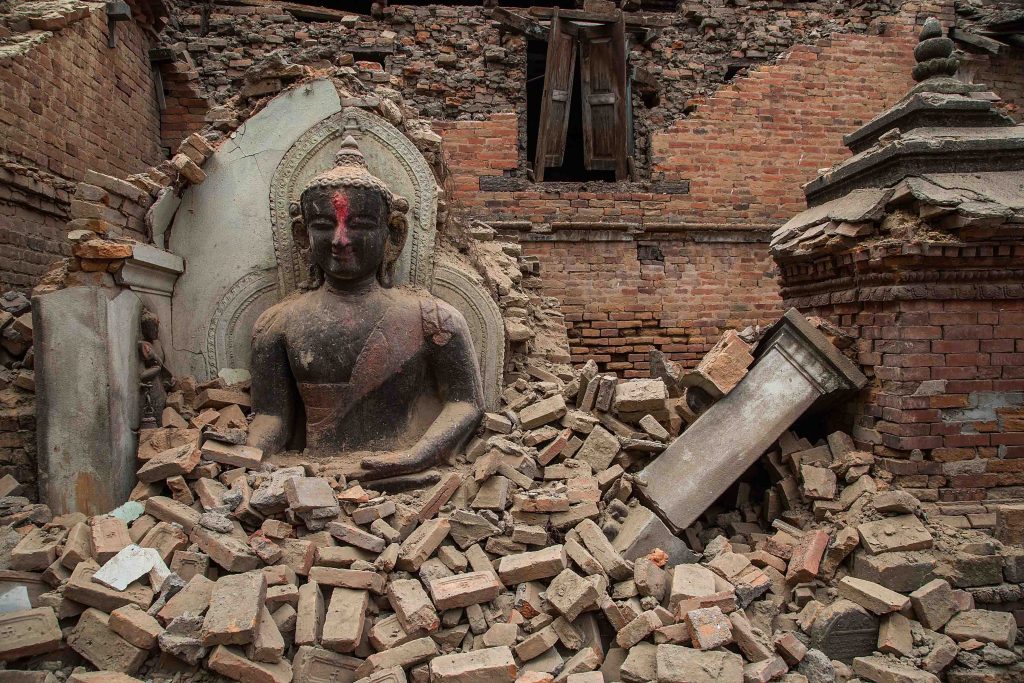
In 2015, Nepal was rocked by a devastating earthquake, also called Gorkha earthquake that struck near the city of Kathmandu in central Nepal. About 9,000 people were killed, many thousands more were injured and more than 600,000 structures in Kathmandu and other nearby towns were either damaged or destroyed. The earthquake was felt throughout central and eastern Nepal, Ganges River plain in northern India, and northwestern Bangladesh, as well as in the southern parts of the Plateau of Tibet and western Bhutan.
Its epicenter was about 21 miles (34 km) east-southeast of Lamjung and 48 miles (77 km) northwest of Kathmandu, and its focus was 9.3 miles (about 15 km) underground. Two large aftershocks, with magnitudes 6.6 and 6.7, were reported soon after within one hour of the main quake. Several dozen smaller aftershocks occurred in the region during the succeeding days.
According to a panel study by Mercy Corps, the aftermath of the 2015 earthquake was complicated by subsequent environmental and economic shocks and stresses. “Most households experienced several shocks in the year following the earthquake, which may explain why households were unable to rebuild their homes and recover their livelihoods at this time. Households also experienced sharp increases in food prices both years after the earthquake, which may have influenced decreases in food security two years post-earthquake,” according to the report.






(With Inputs from Britannica)






